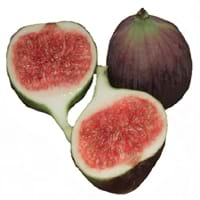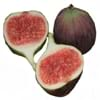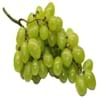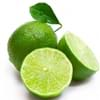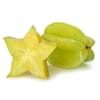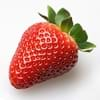Health Benefits
Cancer prevention, Controls blood pressure, Heart care, Increase in haemoglobin, Prevents constipation, Prevents macular degeneration, Reduces nervous tension
Anti-aging benefits, Anti-inflammatory properties, Asthma treatment, Body hydration, Cancer prevention, Digestive aid, Skin cleansing, Skin rejuvenation
General Benefits
Controls blood pressure, Helps in weight loss, Maintains healthy cholesterol level, Strengthens bones
Anti-inflammatory properties, Body hydration, Controls blood pressure, Digestive aid, Maintains healthy cholesterol level
Skin Benefits
Brightens and lightens complexion, Hydrates skin, Skin rejuvenation, Treatment of acne
Anti-aging benefits, Brightens and lightens complexion, Hydrates skin
Hair Benefits
Good conditioner, Regulates hair growth, Softening mask
Promotes longer and healthier hair, Regulates hair growth
Allergy Symptoms
Abdominal pains, Anaphylaxis, Coughing, Headaches, Hives, Itching, Nasal congestion, Skin rash, Sneezing, Sore throat, Swelling of hands
Breathing difficulty, Decrease in blood pressure, Dizziness, Eczema, Hives, Runny nose, Swelling of mouth, tongue or lips, Watery eyes
Side Effects
Allergic reaction, Skin rash, Possibly unsafe during pregnancy
Allergic reaction, Bloating, Diarrhoea, Indigestion, Intestinal gas, Nausea, Vomiting
Best Time to Eat
Best if taken as a breakfast (or empty stomach), Don't consume at night and before bed, Morning time (before lunch)
As a snack in the late afternoon, Don't consume at night and before bed, Eat the fresh ones, avoid mixing with any other foods, don't eat after meal., Strictly avoid empty stomach
Vitamin B5 (Pantothenic Acid)
Vitamin C (Ascorbic Acid)
Vitamin K (Phyllochinone)
Calories in Fresh Fruit with Peel
Not Available
Calories in Fresh Fruit without Peel
Not Available
Calories in Frozen Form
Not Available
Calories in Canned Form
Not Available
Type
Tree fruit
Berry, Melon
Season
Summer, Winter
Summer
Varieties
Abyad, Adriatic, Alma, Atreano, Bataglia, Black Bethlehem, Black Madeira, Black Mission, Brown Turkey, Sierra, Calimyrna, Kadota, Deanna, Figoin and Hardy Chicago Fig
Sugar Baby, Sangria, Golden Midget, Starlight, Jubilee, Starbrite, Extazy, Stars 'n' Stripes, Mickylee, Yellow Baby, Yellow Doll, Little Baby Flower, Sweet Favorite and Cream of Saskatchewan
Color
Green, Purple, Red
Canary yellow, Coral red, Orange, Salmon yellow, Scarlet red, White
Origin
Western Asia
Southern Africa
Soil Type
Clay, Limestone, Loam, Sandy
Sandy, Well-drained
Climatic Conditions
Dry, Warm
Dry, Hot
Facts about
- Fig tree is considered as a symbol of abundance, fertility and sweetness.
- The fig is made up of 55% of natural sugar so they are the sweetest fruits.
- Figs are used as a fat substitute in recipes.
- Watermelon contain 91% of water.
- In Japan & Chine, watermelon is a popular gift to bring a host.
- Entire watermelon is edible, even the rinds & seeds.
- There are more than 1200 varieties grown in the world.
Top Producer
Turkey
China
Other Countries
Albania, Algeria, Brazil, Egypt, Iran, Morocco, Syria, Tunisia, United States of America
Algeria, Brazil, Egypt, Iran, Kazakhstan, Mexico, Spain, Turkey, United States of America
Top Importer
France
Germany
Top Exporter
Turkey
China
Botanical Name
Ficus carica
Citrullus Lanatus
Synonym
Not Available
Citrullus vulgaris
Subkingdom
Tracheobionta
Tracheobionta
Division
Magnoliophyta
Magnoliophyta
Class
Magnoliopsida
Magnoliopsida
Subclass
Alismidae
Dillenhidae
Order
Rosales
Cucurbitales
Family
Moraceae
Cucurbitaceae
Species
Ficus carica
C. lanatus
Generic Group
Mulberry
Gourd
Compare Fig and Watermelon
It is important compare Fig and Watermelon as both the fruits have a different nutritional value. Their comparison can be done on the basis of their vitamin and mineral content, calories, benefits as well as characteristics, making it easier for us to choose the best fruit for our diet. Their general health benefits are as follows:
Fig Benefits: controls blood pressure, helps in weight loss, maintains healthy cholesterol level and strengthens bones.
Watermelon Benefits: anti-inflammatory properties, body hydration, controls blood pressure, digestive aid and maintains healthy cholesterol level.
Fruits are also used as a remedy for various hair problems. The hair benefits of Fig are: good conditioner, regulates hair growth and softening mask and hair benefits of Watermelon are: promotes longer and healthier hair and regulates hair growth. Some fruits are known to cause allergic reactions. The allergy symptoms of first fruit are: abdominal pains, anaphylaxis, coughing, headaches, hives, itching, nasal congestion, skin rash, sneezing, sore throat and swelling of hands and the symptoms of second fruit are: breathing difficulty, decrease in blood pressure, dizziness, eczema, hives, runny nose, swelling of mouth tongue or lips and watery eyes. Get sorted Fig vs Watermelon comparison with the help of fruit comparison tool by fruitvs.com.
